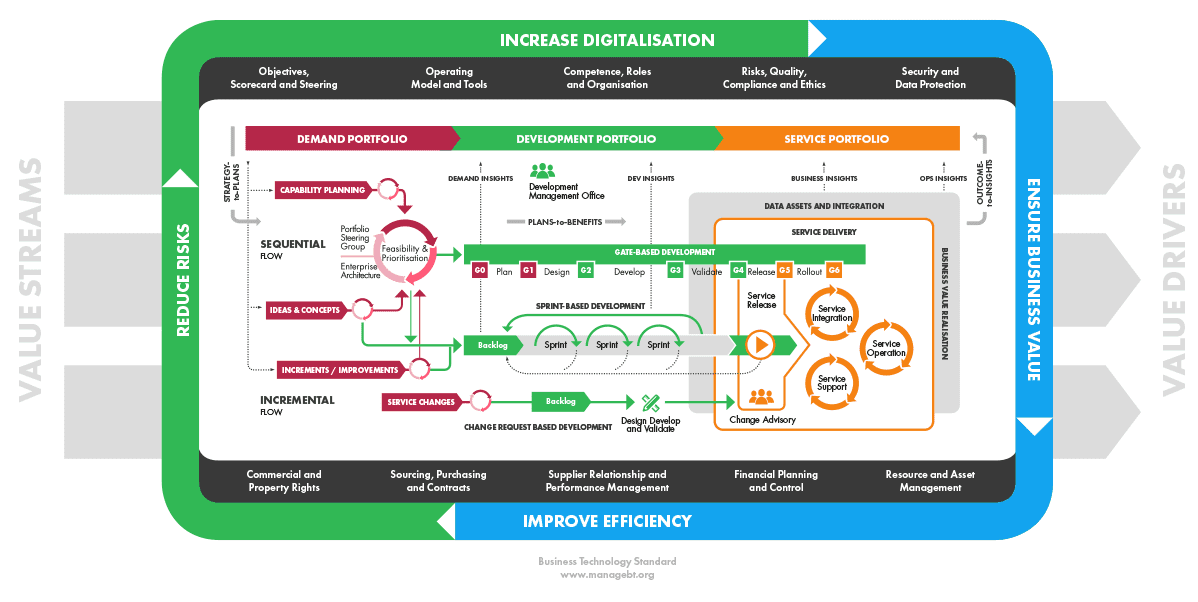Designing innovative services takes effort. However, even the best and most useful services need to be continuously improved as the operational environment changes and users’ needs evolve. The main purpose of continual service improvement is to align services with changing business needs.
In order to improve a service, it is essential to measure the current performance needs and define key metrics and objectives. Evaluating the service performance on a regular basis and utilising reports and analytics tools allow the service management to identify the improvement needs, assess them and turn them into improvement actions.
On top of measuring and monitoring the service, other sources of information should also be used as basis for continual improvement. For example, a constant dialogue with business stakeholders supports understanding the business environment and roadmaps. In addition, the users should be encouraged to give input concerning the update needs of the service or the service experience through, for example, a self-service portal. Periodical user surveys are also a good source for user feedback and help to follow the trends related to user needs.
Continual service improvement requires a certain service management maturity such as clear roles and matching competence, well-defined tools and processes as well as a governance model.
Continual improvement also requires an active approach as well as a willingness and mindset to aim always for better. Each area of continual improvement should have an owner with enough empowerment to make things happen. Continual improvement activities should be built into the service management setup and the deliverables should be reviewed on a regular basis.
Retirement is the final stage in the service lifecycle. Service portfolio steering, after considering the relevant business or service operations reasons, can authorise the retirement. In many cases, the retirement takes place after the release of a new service replacing the existing one.
Service owners and managers are responsible for maintaining service plans and roadmaps relating to the underlying technologies and solutions. In addition to the development initiatives, service roadmaps also indicate the ramp-downs of services or their components. Ramp-down planning must start well before the planned service retirement time and is linked and synchronised with the development project of the possible replacing service.
Quality of operational data and configuration management database (CMDB) are key to identifying service item relations and to avoiding unwanted impacts to other services. Up-to-date configuration data and service relations enable proper ramp-down planning with minimised risk of surprises and unplanned downtime. Service integration will coordinate actions to retire the service in a planned and controlled way.
